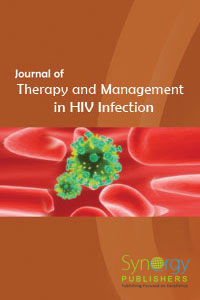
Acceptability of HIV Rapid Testing in Diverse Clinical Settings in Iran Pages 35-40
S. Bayanolhagh, Z. Bayat Jozani, M. Mohammadi Firouzeh, A. Ghorbani, S. Ahsani-Nasab, Minoo Mohraz, F. Vakil-Ghahani and N. Chegeni Nezhad
Iranian Research Center for HIV/AIDS, Iranian Institute for Reduction of High-Risk Behaviors, Tehran University of Medical Sciences, Tehran, Iran
DOI: https://doi.org/10.12970/2309-0529.2018.06.06
Download PDFAbstract: Introduction: Rapid HIV testing in clinical settings can identify previously undiagnosed persons and link them to care, as well provide patients with knowledge of their serostatus and risk reduction counseling. We conducted a survey to characterize factors affecting the acceptance or declining of rapid HIV testing among Iranian patients.
Methods: This cross-sectional survey was conducted from October 2014 to December 2014 with patients in three different health care centers (an emergency department in an urban hospital, a rural health centre, a voluntary counseling and testing centre (VCT) within Imam Khomeini Hospital, Tehran, Iran and a rural health centre). Participants completed a semi-structured face-to-face questionnaire and were tested by an HIV rapid test (Chembio Sure Check).
Results: Of 222 participants, 25 participants were from the urban emergency department, 40 from the urban VCT program, and 157 from the rural health care centre. All did the rapid HIV test; all were HIV negative. HIV-related risk profiles found the urban emergency department patients more likely to have multiple partners (26%, P<0.01) and history of sexually transmitted diseases (27%, P<0.001) compared to VCT patients (9% and 3%, respectively) and rural clinic patients (4% and 1%, respectively). Emergency department patients were also more willing to pay for a HIV rapid test (44%, P<0.01), doing a rapid self-test at home (84%,P=0.01), preferring pharmacies as a place for providing rapid tests (80%, P=0.001). Also level of participants’ awareness was considerably different between mentioned centres (median=11, 12, 10 for emergency department, VCT and rural Health care centre respectively; P=0.012).
Conclusions: Increasing knowledge about HIV rapid testing, its availability, and keeping costs low can expand the desire to use the test and ultimately prevent the spread of HIV through lack of knowing one’s serostatus and lack of treatment. Emergency departments in urban Iran may be an opportunity to test persons at high risk for HIV infection.
Keywords: HIV, Rapid HIV testing, Iran.
Read more

